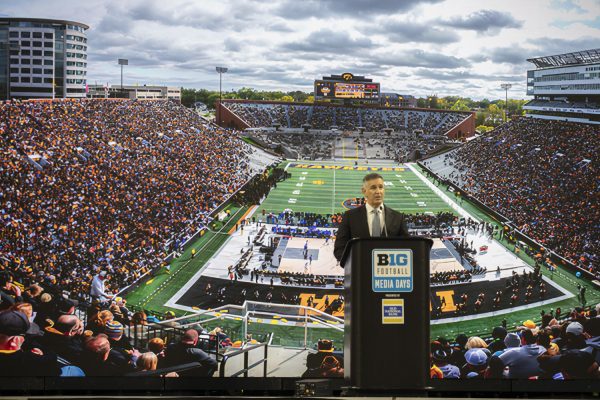UI expands procedure methods for tracheomalacia
The UI Stead Family Children’s Hospital has seen recent success through a new procedure that could decrease infant mortality.
University of Iowa Stead Family Children’s Hospital is seen in Iowa City Sunday, Sept. 25, 2022.
January 25, 2023
Advances are being made at the University of Iowa Stead Family Children’s Hospital as the hospital practices new procedure options for infants with tracheomalacia.
Tracheomalacia is a condition where patients are born with a windpipe that cannot maintain its shape. With this malformation, when the child tries to breathe out, pressure in the chest increases and the trachea becomes too narrow, causing it to collapse.
Sohit Kanotra, otolaryngologist and director of the UI Aerodigestive and Tracheostomy Clinic, said up until recently, children with this condition would likely receive a tracheostomy, a procedure where a tube is inserted into the neck.
RELATED: New UIHC procedure provides safer treatment options for high-risk heart patients
“There’s a lot of morbidity associated with a tracheostomy,” Kanotra said. “Many of the kids died because of a tracheostomy if the trach was to come out, so this surgery will avoid all these complications associated with the tracheostomy.”
The new procedure, a posterior tracheopexy, is new for Iowa but was developed at Boston Children’s Hospital where it was successful. This approach tethers the trachea to the surrounding tissues.
“We suture the back wall of the windpipe to the spine, and that keeps it open, and the child essentially avoids getting a tracheostomy,” Kanotra said.
Surgeons at UIHC recently performed the first posterior tracheopexy in Iowa on a small baby who was not able to breathe. They were able to remove the child’s breathing tube, and he could breathe on his own just a few days after the surgery.
“The child had a severe issue, and we were about to get a trach, and then we decided we’ll do our first tracheopexy,” Kanotra said.
Kanotra said she is excited about this success and the future of this new surgical procedure.
“I think it’s going to get more and more popular because it’s a much easier technique to do, and it avoids major complications which can happen with putting a tracheostomy in a child,” Kanotra said.
Joel Shilyansky, UI Stead Family Children’s Hospital director of pediatric surgery and surgeon-in-chief, said he believes the procedure has the potential to be moved up to a primary approach. He said he also hopes to see this approach become more accessible and minimally invasive.
“A big part of it is making sure we have good access for patients who need this,” Shilyansky said. “First thing is to actually get the child here and make sure that we make the right diagnosis.”
To make the procedure easier and less painful, doctors are working toward using a camera and skinny long instruments to do a similar procedure. Kanotra mentioned that some centers have done it robotically as well.
“Rather than opening up the chest, we have started to do it endoscopically,” he said. “This gives you a smaller incision and makes it even less morbid.”
Shilyansky emphasized that it takes a whole team to make sure a child with these conditions does well.
“The most exciting part of it is the teamwork that went into it and the collaboration, which makes each of us better than we would be individually,” Shilyansky said. “I think that’s a principle in what we do at University of Iowa Children’s Hospital. We try to work together, try to build our teams and really focus on the well-being of our children.”














